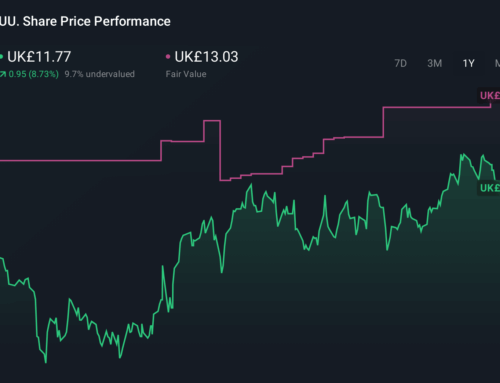We used to agree on Earth Day. Political division has changed the environmental priorities
April 22, 2025
This year marks the 55th anniversary of Earth Day, but rather than enjoying its golden years, the planet is facing a new kind of peril. In recent weeks, the Republican party — the same party that oversaw the creation of the eco-conscious holiday back in 1970 — has delivered considerable blows to the environment, including taking steps to undo critical Nixon-era policies that protect the nation’s air, water, natural lands and threatened species.
President Nixon presided over the first Earth Day, founded in large part as a reaction to a devastating oil spill off the coast of California. Nixon and his wife, First Lady Pat Nixon, planted a tree on the White House lawn to commemorate the occasion.
The holiday ushered in a decade of environmental activism and legislation under his conservative leadership, including the creation of the U.S. Environmental Protection Agency and the signing of the Clean Air Act in 1970; the Clean Water Act in 1972; and the Endangered Species Act in 1973.

Morgan Miller, left, and Josh Marsh, both longtime Santa Barbara residents, walk the oil-coated beach at Refugio State Beach looking for wildlife to rescue.
(Al Seib / Los Angeles Times)
Now the landscape looks considerably different. In the first months of his second term, President Trump and his allies, including EPA Administrator Lee Zeldin, unleashed a slew of orders that experts say are undoing the very policies their party once helped champion.
Zeldin and other Trump administration officials say rolling back these environmental protections will save taxpayers money and reduce red tape that is hampering energy independence. Zeldin told reporters on Monday that “powering the great American comeback” is one of the EPA’s top priorities.
Many experts disagree with their justifications.
“The original environmental legislation that was passed in the ‘70s was game-changing for the nation,” said Gretchen Goldman, president of the nonprofit Union of Concerned Scientists, who recently served as director of climate change and research technology at the Department of Transportation under President Biden.
Those 1970s laws were “passed under the recognition that we had substantial environmental problems that we couldn’t ignore as a nation,” Goldman said. “The country was in unison then that we needed to tackle these problems.”
Indeed, Earth Day was created with a bipartisan spirit that resonated across party lines. The holiday’s founder was a Democratic Senator from Wisconsin, Gaylord Nelson, who worked closely with a grassroots group of college students and environmental activists. It arrived at a moment when Americans were choking on smog, soot and leaded gasoline; when Rachel Carson’s seminal book Silent Spring was sowing awareness of the dangers of pollution; and when NASA was just beginning to transmit color photos of Earth from space, offering a new perspective on the planet’s fragility.
Such bipartisanship is hard to fathom in today’s divided times. A Gallop report published this month found that 91% of Democrats say the government is doing too little on the environment, compared with only 22% of Republicans.
The Trump administration continues to take steps that experts say will worsen pollution and other environmental issues, including loosening 31 key rules and regulations that govern air and water quality standards, electric vehicle initiatives and curbing planet-warming fossil fuels.
1
2
1. A ghost–like downtown skyline rises through the smog Monday afternoon as seen from the Mulholland Scenic Corridor overlook above the Hollywood Bowl in 1995. (Perry C. Riddle / Los Angeles Times) 2. LOS ANGELES, CA, WEDNESDAY, FEBRUARY 26, 2014 – The view from the Hollywod Bowl Overlook on Mulholland Drive shows grey skies enveloping the LA skyline as rain is predicted for Southern California. (Robert Gauthier/Los Angeles Times) (Los Angeles Times)
President Trump has also ramped up oil-and-gas drilling, coal production and natural-resources mining, including in sensitive landscapes such as parts of rural Alaska. And he has opened up more than half of the nation’s national forests for logging — including all 18 national forests in California.
“It is not an overstatement to say that the Trump administration has launched the worst White House assault in history on the environment and public health,” said Manish Bapna, chief executive of the nonprofit Natural Resources Defense Council. “Day by day and hour by hour, the administration is destroying one of the signature achievements of our time.”
Bapna’s remarks came during a recent virtual gathering of environmental experts who assembled to review Trump’s first 100 days in office. The administration has taken more than 70 actions that are harmful to the environment so far, including executive orders and regulatory changes, they said.
The Trump administration has also offered the nation’s dirtiest industrial polluters exemptions from controls outlined by the Clean Air Act — which they can request by simply sending an email. Trump this month also signed a sweeping executive order requiring the EPA and other federal agencies to eliminate, or “sunset,” an array of environmental rules within a year.
Such steps could have “profound and immediate consequences,” said David Hawkins, who served as an EPA assistant administrator during the Carter years. “The entire machinery of the federal government is going to be turned over to getting rid of regulations that are keeping the air clean, keeping the water clean.”
That includes the Clean Air Act — which Hawkins helped implement, and which reduced premature deaths by 230,000, heart disease by 200,000, and lost school days by 5.4 million between 1990 and 2020, according to one study published by the EPA. The economic benefits of the act in that time frame were $2 trillion — 30 times the estimated cost to comply, the study found.
Hawkins said Nixon’s environmental agenda was likely more motivated by politics than ideology, but that “what Nixon did was pick up on the fact that there was a lot of bipartisan political support for cleaning up pollution.”
“He recognized legitimate demand for action by the government,” he said.
Today, Trump administration officials “want to pretend that we to choose the environment or the economy, but there’s no evidence that’s true,” said Goldman, of the Union of Concerned Scientists. “We have the solutions, we have the technologies, we have the ways of controlling pollution while enabling our economy to flourish.”
For example, she said, the GDP of the U.S. continued to grow after the implementation of the Clean Air Act, even as the population grew and the amount of cars on the road increased.
Clean air isn’t the only ‘70s-era policy in the Trump administration’s crosshairs. The EPA has also announced that it will revise its definition of “waters of the United States” in order to streamline permitting for farmers, landowners and businesses under the Clean Water Act. The guidance builds on a 2023 Supreme Court decision that removed protections for millions of acres of the country’s wetlands.

A bald eagle soars over the Las Virgenes Reservoir amidst light rain in Westlake Village.
(Allen J. Schaben/Los Angeles Times)
What’s more, the U.S. Fish and Wildlife Service and National Marine Fisheries Service last week proposed a rule that would narrow the Endangered Species Act by redefining what it means to “harm” a protected species. The move would limit the meaning to only direct actions taken to kill or injure endangered or threatened wildlife — therefore removing protections that cover their habitats.
The Endangered Species Act was passed in 1973 after Nixon called on Congress for stronger legislation to prevent the extinction of species. The act has been credited with saving 99% of the species it protects from extinction, including bald eagles, California condors and Mexican gray wolves.
Though much has changed over the last five decades, this year’s Earth Day holds particular meaning in eco-conscious California. The president has taken direct aim at the state’s climate efforts, including moves to block California’s gas car ban, pull funding from its green hydrogen hub, withhold disaster aid, and undermine its cap-and-trade program.
Advocates say these efforts are only a few among many concerning actions by the current president, which also include layoffs at the National Oceanic and Atmospheric Administration and the shuttering of its scientific research arm; halting environmental justice grants at the EPA; canceling funding for clean energy projects at the Department of Energy; and directing the Department of Justice to undercut states’ abilities to address climate change and limit carbon pollution, among many others.
“My personal and professional expectation for how much global warming and climate change will actually occur has increased from my assumption a year or two ago,” said Daniel Swain, a climate scientist with UCLA, during a recent briefing. “It wasn’t like we had completely turned the tide with the previous presidential administration either — I have no illusions there — but I do think that currently, the situation is that appreciably more warming is now likely than was the most plausible trajectory just a couple of months ago.”
Bapna, of the NRDC, said the administration’s actions are threatening to throw decades of the nation’s aspirational environmental achievements into reverse.
“The standards, the government capacity, the legal safeguards that we put into place since the original Earth Day in 1970 have driven unprecedented gains in the quality of our lives and the productivity of our workers and the strength of our economy,” he said. “It is a national asset.”
Search
RECENT PRESS RELEASES
Related Post






